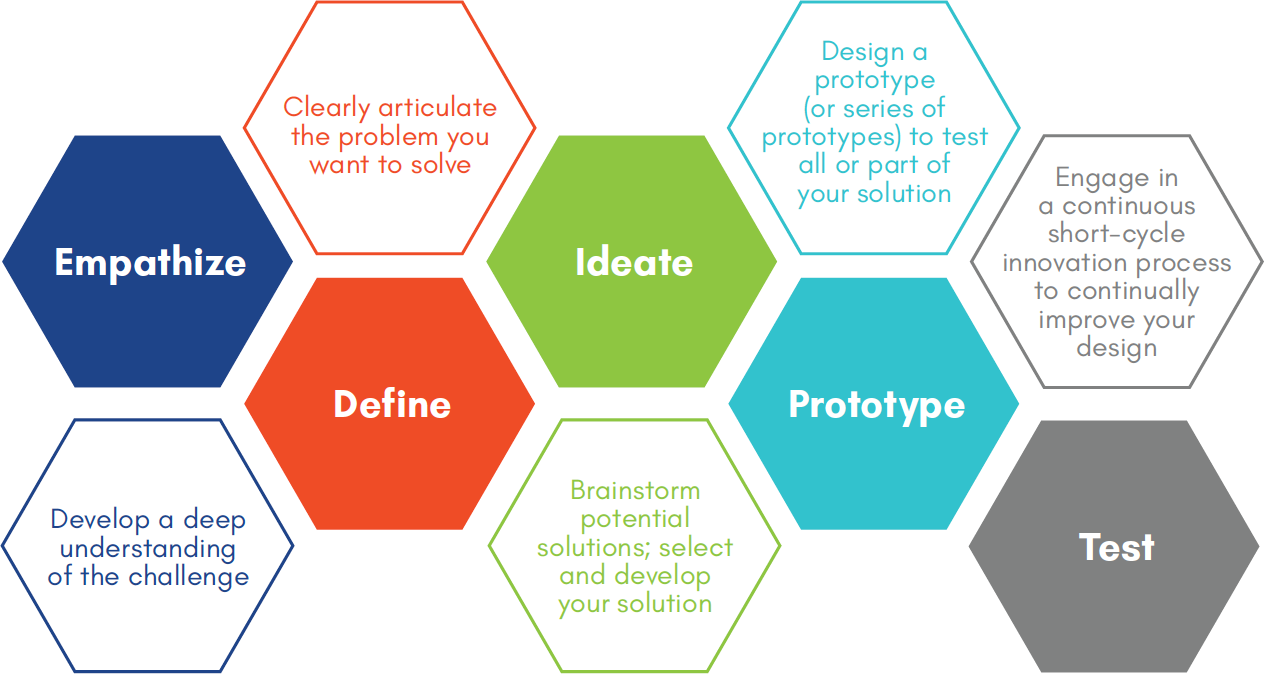School District of Miami-Dade County
PROFESSIONAL LEARNING:
Effective professional learning systems and structures
Promising Practice:
High-quality, effective and responsive professional learning
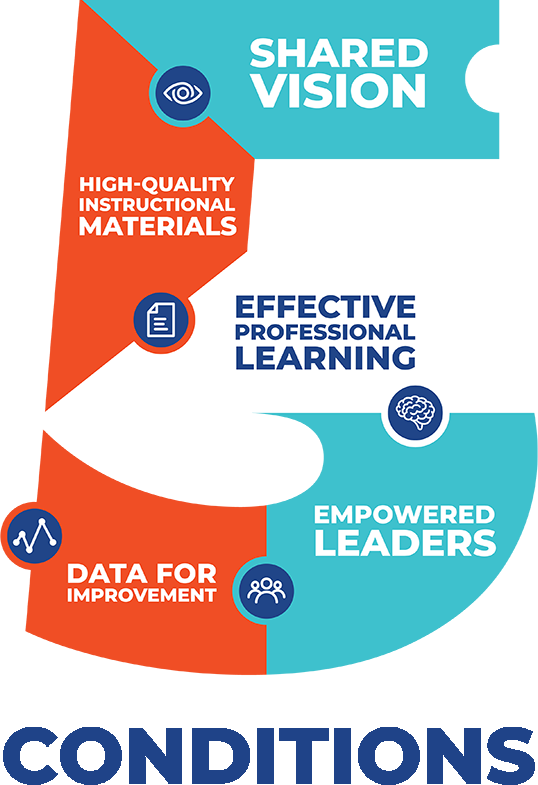
Our goal for this series of Cases for Impact is to provide education leaders and teachers with knowledge and resources needed to ensure that great teaching and learning is consistently realized in all Florida schools. We believe that if education leaders are empowered to know how to recognize, support, and scale excellent teaching practices, we will see tangible results in the classroom.
In partnership with the Florida Association of District School Superintendents (FADSS), Impact Florida launched the Districts for Impact initiative in 2019 to support Superintendents’ focus on supporting excellent instruction within their systems, for all kids. This series of Cases for Impact highlights the promising instructional practices gleaned from the inaugural cadre of five Florida districts.
While we recognize that there are many conditions that factor into a student’s ultimate success, Impact Florida focuses on the factors that leaders and educators can control in their classrooms to improve student engagement and learning. We call these factors the Five Conditions That Support Great Teaching.
This Case for Impact Profile deconstructs how the Miami-Dade County Public Schools (M-DCPS) leverage effective professional learning systems and structures that empower school and district leaders to improve student engagement and instructional practices.
Establishing a Common Belief:
Students Come First
When Alberto M. Carvalho took the helm as Superintendent of Miami-Dade County Public Schools in the fall of 2008, several schools in the district were facing state closure due to poor student performance. As an immediate priority, Mr. Carvalho led the creation of a five-year Strategic Framework focused on student achievement and establishing a common belief across the district
that students come first. Among other accomplishments, the district saw a 15 percent increase in the federal graduation rate to nearly 77% during this time. This initial strategic framework laid the foundation for the new plan, Vision 20/20: The 2015–2020 Strategic Blueprint, in 2015. In the new Strategic Blueprint, M-DCPS decided to continue focusing on student achievement, but this time through Relevant, Rigorous, and Innovative Academics (Fig. 1). This central pillar is supported by four others:
- Highly Effective Teachers, Leaders, and Staff
- Safe, Healthy, and Supportive Learning Environment
- Informed, Engaged and Empowered Stakeholders and
- Effective and Sustainable Business Practices
In support of the pillar of Highly Effective Teachers, Leaders, and Staff, the district developed the following theory of action:
If our leaders engage in highly effective and responsive professional learning, then educators will be highly effective and facilitate relevant, rigorous, and innovative instruction.
This theory of action places a priority on elevating the impact of teachers, leaders, and staff by engaging them in more effective training and drives the district’s guiding principles of professional learning:
- The difference in teacher quality is the strongest factor affecting student achievement.
- Leadership effectiveness is second to teacher quality as it relates to impact on student achievement.
- Increasing the effectiveness of professional development is the leverage point with the greatest potential for refining the day-to-day impact of educators.
FIG. 1 | M-DCPS STRATEGIC BLUEPRINT PILLARS
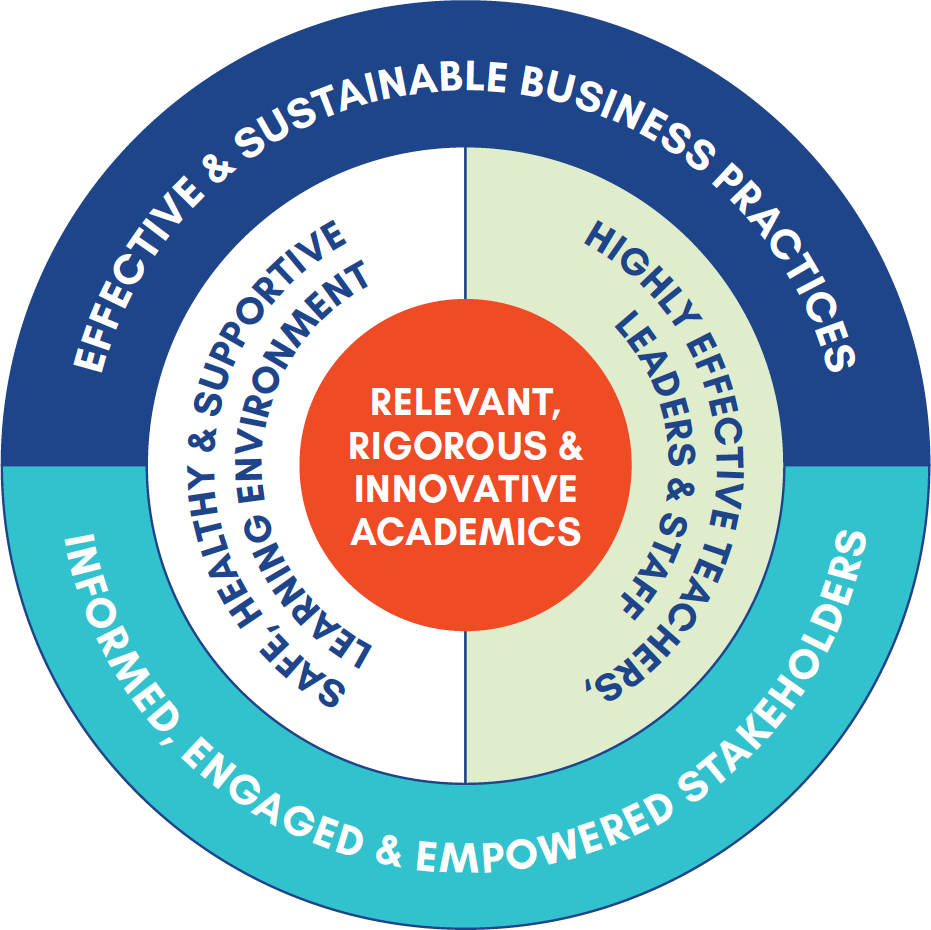
ABOUT MIAMI-DADE COUNTY PUBLIC SCHOOLS (SY 2019–20)
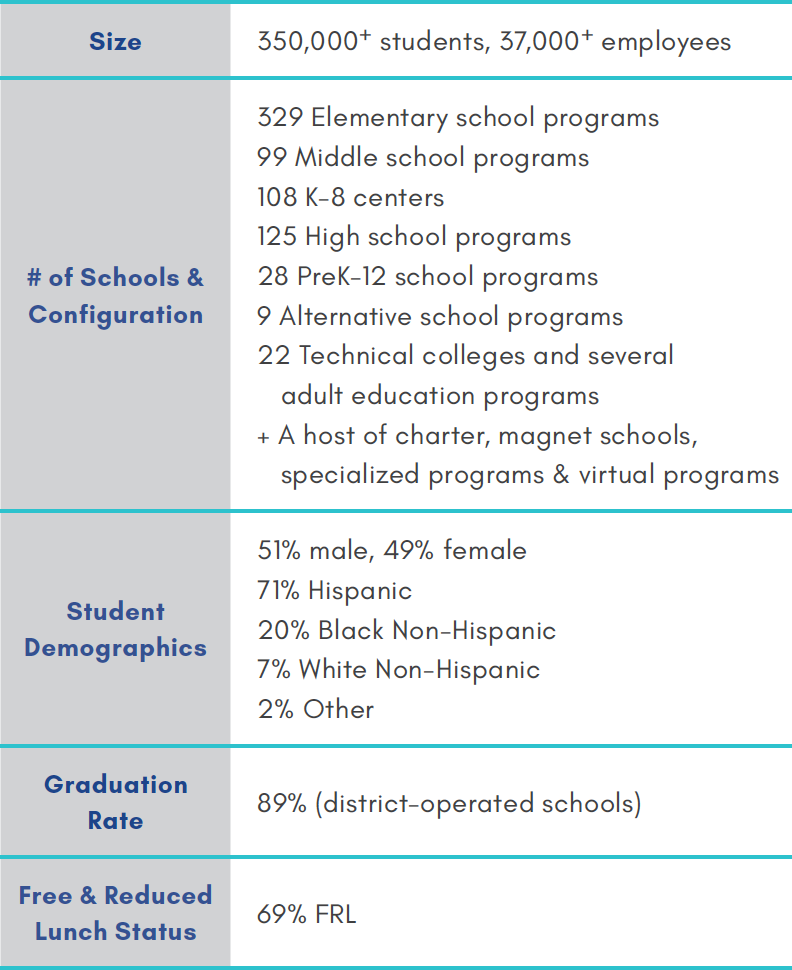
M-DCPS’ Promising Practice: High-quality, Effective And Responsive Professional Learning
M-DCPS has always believed developing great teachers and school leaders to be one of the highest leverage opportunities to improve student success. As the fourth largest district in the nation, only behind New York City, Los Angeles Unified, and the City of Chicago, M-DCPS faced the unique challenge of systematically scaling professional development and capacity building to all classrooms in more than 430 schools. To address this, M-DCPS decided to tackle professional development at all aspects of the school level, including non-instructional staff, teachers, and administrators to ensure everyone was on the same page across the large district. M-DCPS encouraged a culture of collaboration between the Office of Academics and Transformation and the Office of Human Capital Management to drive this work, instead of having the departments operate within their silos to address the work independently.
Through classroom observations, district leaders realized that the training concepts in use at the time were not translating or being actualized to classrooms. So, in 2015, the district rededicated themselves to teacher and leader development as one of seven key strategies of the Vision 20/20 Strategic Blueprint to propel student achievement.
"The research that shows the correlation between high quality teachers and student academic success is very compelling. In M-DCPS, we have over 20,000 teachers, so we believe profoundly in the need to invest in our educators. We know that if we’re investing in them and helping them develop themselves continuously, whether they are emerging teachers, rookie teachers, teachers that have been in our school system for a very long time, or career educators, we can change the lives of our students."
- Marie Izquierdo, Chief Academic Officer
The other challenge M-DCPS faced was designing professional learning opportunities to meet the specific learning needs of its school and district staff. They began collecting data and insights directly from school and district staff through surveys and interviews. They also reviewed prevailing literature and research on the subject, one being an Education Week article, What Do Teachers Really Want From Professional Development? Respect, that interviewed educators across the country about their feedback on professional development. In the article, educators overwhelmingly agreed, “Too often, training sessions fail to account for teachers’ experience, ignore their expertise, and use tactics that are counter to instructional best practices.”
The focus of professional learning in M-DCPS shifted to providing ongoing support through training programs that aim to change the mindset and practices of staff in small ways over an extended period of time, instead of one-time professional development courses with abstract concepts. Now, the district offers a variety of dynamic, research-based professional learning experiences, programs, resources, and strategies intended to address professional development from all angles: top-down, bottom-up, peer-to-peer, etc.
The following guiding questions were used by M-DCPS leadership to initially help determine the effectiveness of their professional learning offerings. Readers can use these questions as a starting point to evaluate the effectiveness of their own professional learning programs:
How effective are our Professional Learning offerings?
- How do we engage teachers and administrators who don’t implement new strategies from professional learning?
- How do we attract and sustain the engagement of staff, particularly those who choose not to attend professional development?
- How do we encourage administrators and teachers to take ownership in their own development?
- How can we use professional learning opportunities to increase both leader and teacher expectations for themselves and for their students?
- What look-fors are we using to check for implementation of new strategies and student success?
M-DCPS has also incorporated more hands-on modeling and experienced-based learning to provide participants an opportunity to practice and get comfortable with concrete strategies that can be implemented in their schools immediately. When designing professional learning offerings, the district is intentional about selecting the facilitators, the audience, the frequency of the training, and the method of content delivery.
The development of these new experiences and program offerings (Fig. 2) were driven by the district’s desire to better serve the needs of its staff to enhance the effectiveness of professional learning opportunities. They’ve been successful in developing a culture of continuous growth at the organizational level, as well as for school and district staff personally.
Since 2016, monthly Professional Development Alignment Meetings have provided a space for Academic and Professional Learning leaders at the district level to ensure the messaging and content is meaningful, consistent, and impactful for all professional learning offerings.
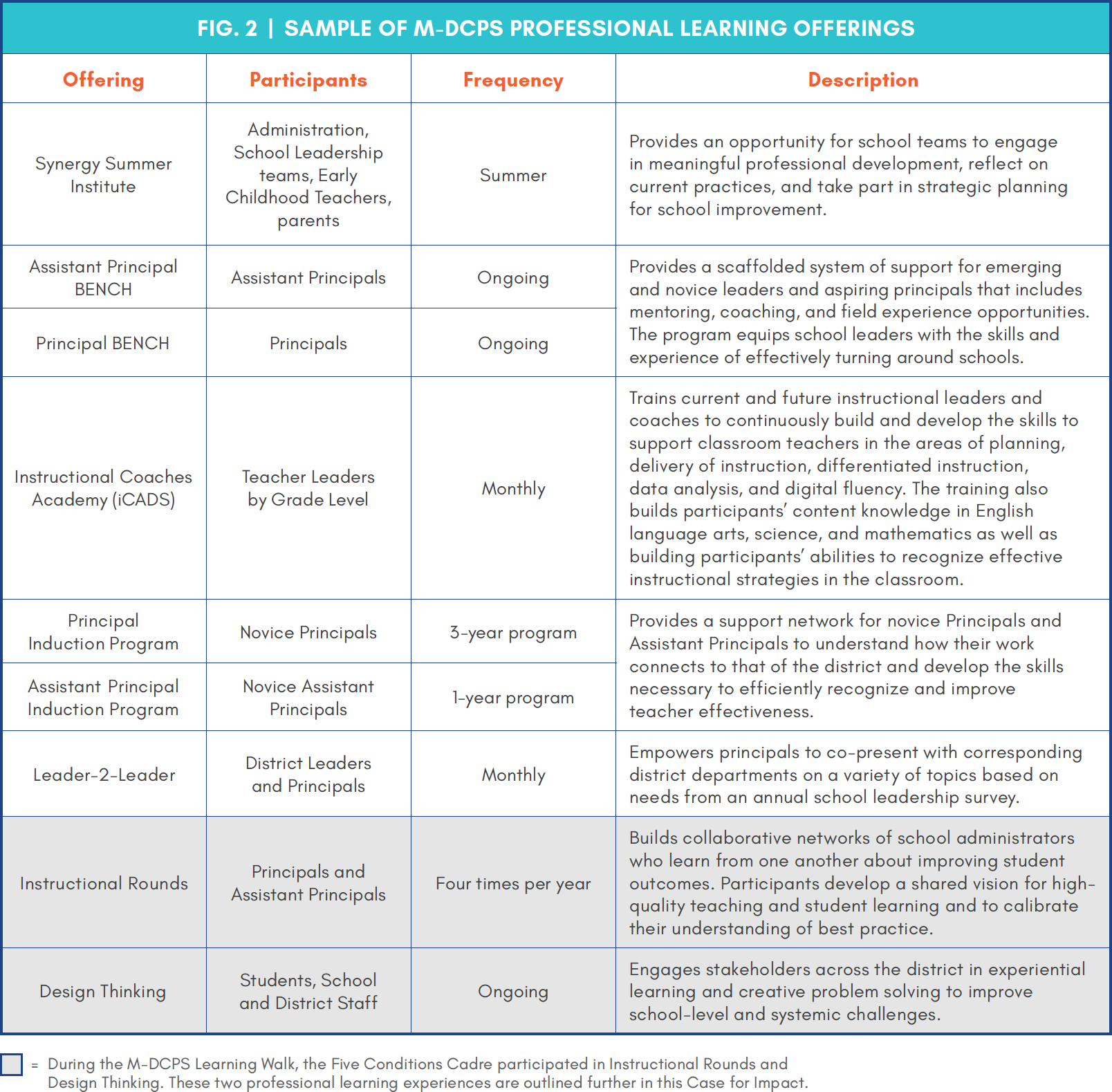
Instructional Rounds: Leveraging Cohorts to Enhance Professional Learning
Instructional Rounds (IR) are one example of how M-DCPS strategically connects school, district, and state efforts with a focus on developing the instructional leadership of school administrators through collaborative networks. During the IR process (Fig. 3), cohort participants conduct objective, non-evaluative observations, calibrate their understanding of instructional best practices based on the Framework of Effective Instruction (FEI), and learn to communicate targeted, actionable feedback to observed teachers.
The FEI outlines the teaching behaviors the district believes are critical for effective instructional practice as it relates to the knowledge of learners, learning environment, instructional planning, engagement, instructional delivery, and assessment.
During each round, which take place quarterly, administrators use low-inference note taking to distinctly capture observed student and teacher actions without judgment related to the predetermined walkthrough look-fors outlined in the FEI. The low-inference, objective notes are captured using the M-DCPS Classroom Practice Reflection Guide developed in partnership with TNTP and UPD Consulting based on Student Achievement Partners’ Instructional Practice Guide.
Through the IR process, teachers volunteer to have their classrooms observed by a cohort of administrators that provide targeted feedback on a predetermined set of look-fors twice throughout the semester. During the first visit of the semester, administrators determine the highest leverage feedback to communicate with the observed teachers in the post- visit reflection discussion. When the cohort returns to the school for the second visit of the semester, they observe the same classrooms with a focus on identifying changes in instructional practices based on the previous feedback given using the same note taking protocol. This same process is repeated for a different subject area in the second semester.
The IR process was developed in response to an AdvancedED accreditation finding that cited a need for the district to build the instructional leadership capacity of principals and assistant principals. M-DCPS’ Instructional Rounds process was inspired by the Dr. Brian Dassler Leadership Academy, a year-long, job-embedded and research-based program for principal professional development.
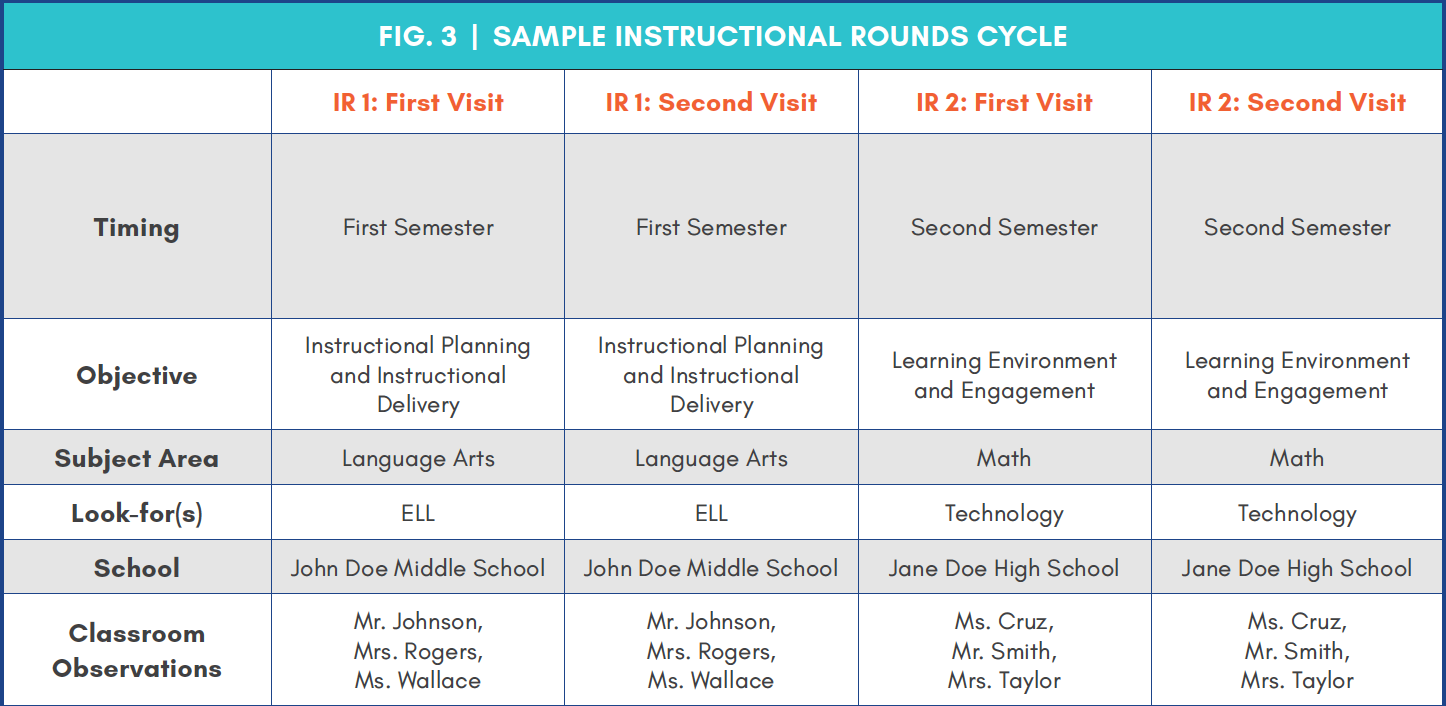
Instructional Rounds in Action: English Language Learners
District leaders use the feedback from IRs to identify trends and patterns across the district to provide targeted system-wide support and professional development. Based on previous observations, there was a clear need to focus on English Language Learners (ELLs).
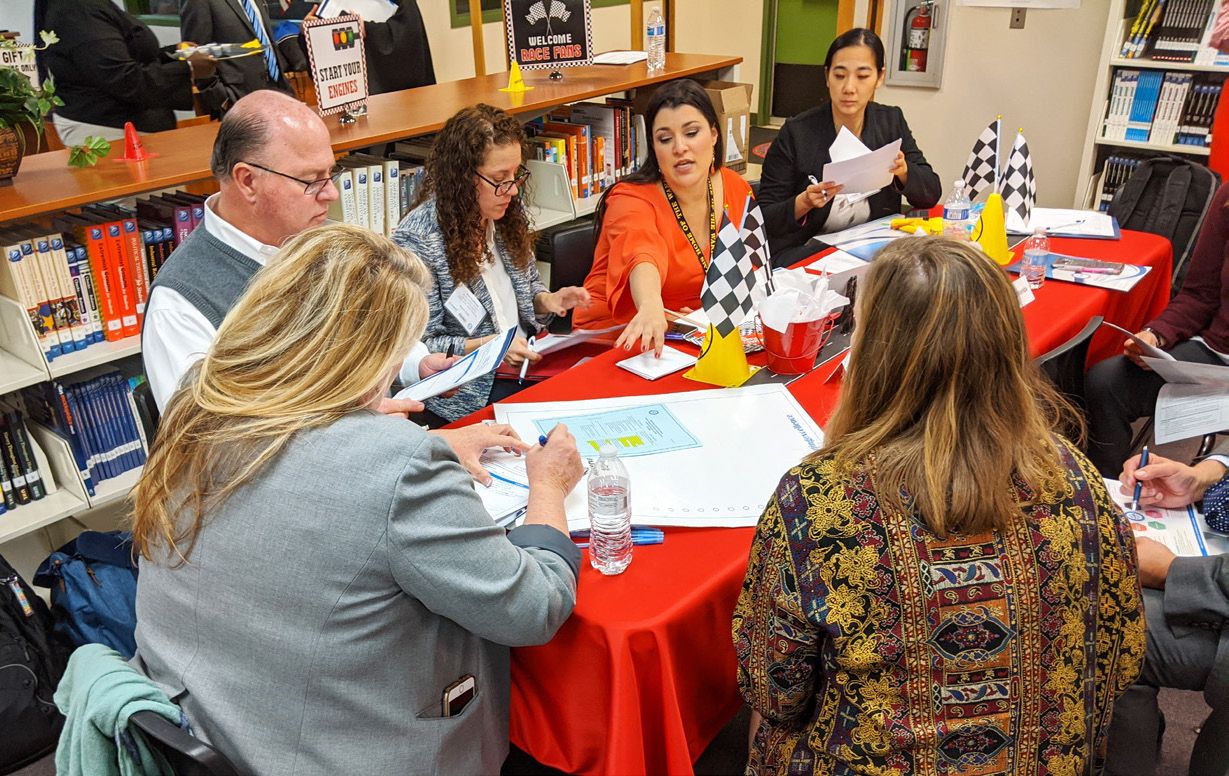
Traditionally, courses designed for English language learners were being taught as intensive reading courses as opposed to the developmental language classes as they were designed to be. During walkthroughs, these classrooms tended to be the quietest in the building, when they needed to be a safe space for students to practice speaking, listening, and applying their newly acquired language skills. They realized that students needed to focus on learning the language before they could access a grade level text in English.
The learnings from these IRs made it clear that there needed to be explicit guidance and a shared vision for ELL instruction in classrooms. Shortly after, M-DCPS developed specific ELL Look-Fors for teachers to guide their instructional practices and for administrators to use to guide their IRs.
"We build the capacity of principals and assistant principals through observing solid instructional practices that they should see across classrooms and across subject areas. Instructional rounds are a learning process, a growing process, not an evaluative process."
- Jose Dotres, Chief Human Capital Officer
Additionally, the district realized there was a shortage of high-quality ELL instructional materials in classrooms and in the marketplace, which greatly affected the work teachers could do with ELL students in M-DCPS. The district now uses the National Geographic Cengage curriculum that adheres to both World-class Instructional Design and Assessment (WIDA) and Florida standards of learning, that also allows the students to see themselves and the world within the diversity of the materials.
ELL LOOK-FORS
What evidence of data was used for planning? What pre-planning forms were utilized?
- World-Class Instructional Design & Assessment (WIDA) Checklist
- FEI
- WIDA Can Do Descriptors
- ACCESS for ELLs composite scores in each domain: Listening, Speaking, Reading and Writing
- ELA Standards mini-assessments
What are some effective ESOL strategies evident during the lesson?
- Songs
- Realia
- Building Background
- Total Physical Response
- Active Learning/Project Based Learning
- Explicit and Targeted Instruction
Was there evidence of scaffolding as support during the lesson?
- Anchor Charts
- Graphic Organizers
- Chunking Text
- Academic Conversations
- Intentional and Planned Collaborative Routines
- Evidence of four language domains: Reading, Writing, Speaking, and Listening
Design Thinking: An Experiential Approach to Professional Learning
M-DCPS began using Design Thinking (Fig. 4) as a way to disrupt their traditional approach to professional development and impact change at the individual school level. After being introduced to the concept in Change by Design by Tim Brown, the district realized it was already implementing some components of the five- stage process, but needed to apply the Design Thinking concepts more cohesively to see results.
Initially, the district collaborated with Carnegie Math to help train Principals, Assistant Principals, and the Education Transformation Office staff on the concepts and application of Design Thinking. Since then, staff members at the school and district levels have been trained through a train-the-trainer model. M-DCPS is now using Design Thinking to develop creative solutions across many areas with a focus on personalization based on the specific needs of the user and the learning environment at the school level. Harnessing the collective brain power of the group and removing hierarchies fosters early buy-in to solutions through collective ownership.
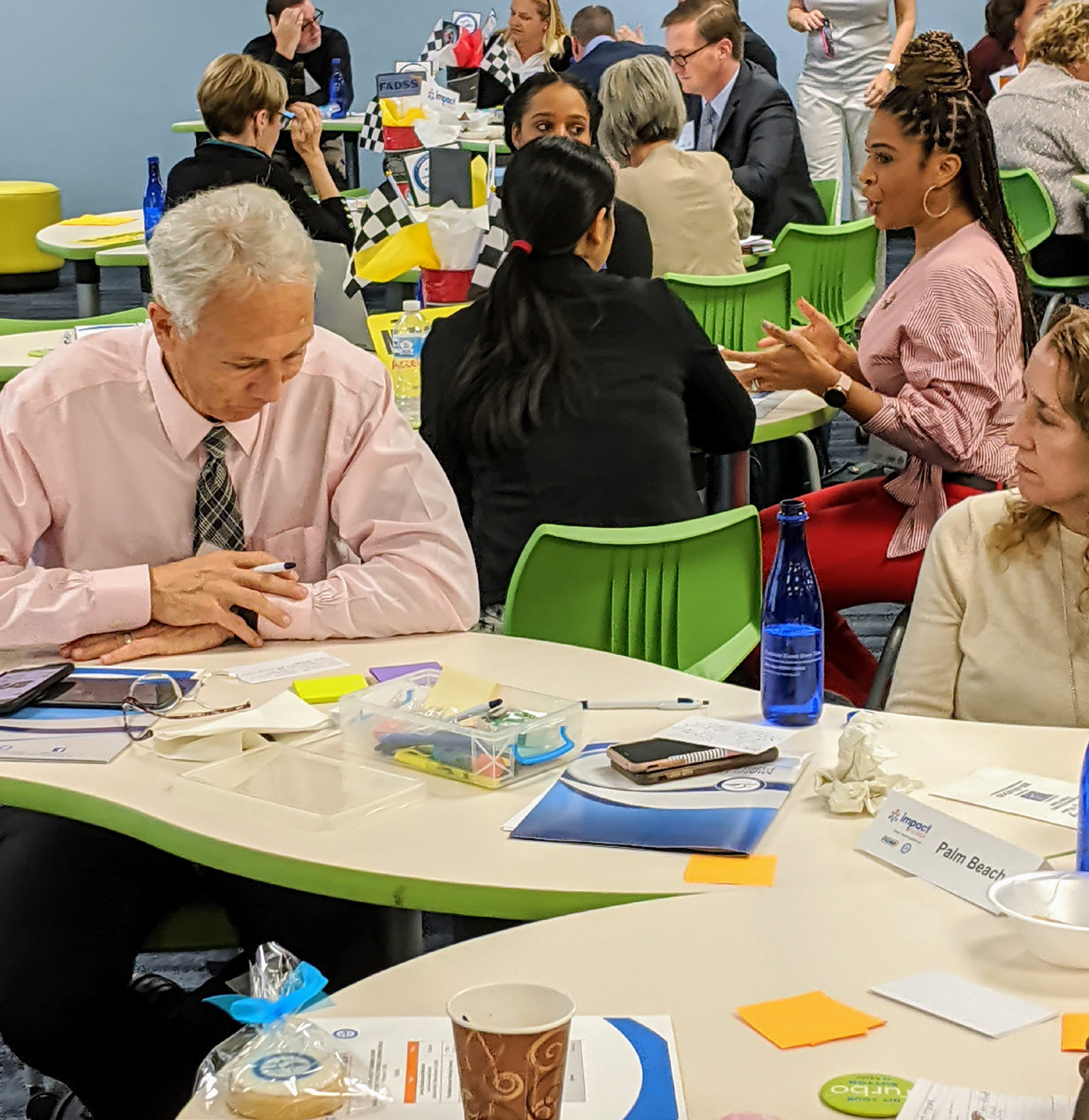
Design Thinking in Action: Middle School Redesign
M-DCPS has used Design Thinking as a method of professional learning to solve systemic problems, such as Middle School Redesign (MSR). The MSR project was initiated following the 2016 Office of Academics and Transformation (OAT) Retreat, where data revealed that there had been alarming declines in student enrollment, student performance, and school climate in traditional 6th-8th grade middle schools when compared to the same grades in K-8 centers.
The district spent two and a half years engaging students, teachers, and school administrators in the Design Thinking process to identify user-centered ways to improve the middle school experience before implementing any new solutions. M-DCPS began by focusing on amplifying the voice of teachers and students by collecting feedback directly from the field through shadowing students during the school day, focus groups, video “confessional” booths, and surveys. The majority of time was spent on the Ideate stage of the Design Thinking process creating a bottom- up professional learning approach where teachers could learn by actively engaging in brainstorming.

“It was essential to get a collective group of people to have a shared vision and problem solve in a personalized way that they can take back to their schools.” said Dr. Ilia Molina, Director of Middle School Redesign. The big win for this new approach to professional development is that it empowers educators to think differently about the challenges they encounter. It shows them that no concern or problem is too big or too small to tackle and the importance of creativity and an open mind when developing solutions.
Several middle schools across the district began implementing components of the MSR framework through the HACKS presentation. Additional professional development was focused on content area instruction, Social Emotional Learning, and for targeted MSR school- based support roles. In the 2018-2019 school year, nine pilot schools launched full MSR implementations while all other middle schools began to implement components of the MSR framework to support a greater focus on social emotional learning, school personalization, and planning opportunities.
Looking Ahead
Since the fall of 2008, the district has received both state and national recognition for dramatic increases in student achievement and graduation rates and innovative approaches to learning. M-DCPS is one of 11 districts (16%) in Florida to maintain an “A” for three consecutive years. Similarly, there have been no F-rated traditional schools in the district for two years in a row, which its leaders’ credit to the strength of school and district staff.
Through professional learning experiences, resources, and programs, the M-DCPS plans to continue strengthening the alignment and collaboration of other district departments similar to what has been done through the forum of PD Alignment meetings with the districts’ Academic and Professional Learning departments.
Building on the momentum created by this culture of change, the district continues to elevate instructional practice and leadership. M-DCPS remains committed to investing in the growth and development of its human capital by continuing to systematize, scale, collaborate and innovate around their professional development offerings, all with the goal of effectively meeting the diverse learning needs of its teachers and students.
Human Capital In A Crisis: The Miami-Dade Perspective On Systems Of Support During COVID-19
On Thursday, March 12, 2020, Miami-Dade Superintendent Alberto Carvalho and his M-DCPS leadership team made a crucial decision: they would be moving all students, effective the following day, to a distanced learning environment. Alerting their principals of the plan and the immediate next steps all leaders would need to take, Superintendent Carvalho called a press conference and made the district’s plans known.
By the end of the next day, Friday, March 13, the initial steps of Miami-Dade’s Instructional Continuity Plan (ICP) had been completed. Within 24 hours, M-DCPS had notified and commenced support for Miami Dade’s 350,000+ students and their families, and over 20,000+ M-DCPS educators into the distanced learning environment. M-DCPS had also begun surveying families about devices, food security, set up a hotline, prepared resources in multiple languages, and shared their ICP with the State of Florida, for other districts to avail of as they engineered their own immediate coronavirus response efforts.
How was it that the fourth largest school district in the country was able to react so quickly to the rapidly burgeoning pandemic, and mobilize so large a system into an entirely new way of work? The answer is that M-DCPS leveraged its strong human capital systems and processes to start planning early — leveraging its leaders to build an Instructional Continuity Plan together as a contingency weeks before any statewide guidance on coronavirus had come out for school systems — and effectively convening its school leaders to then deploy that plan through M-DCPS’ well-established collaborative structures and their systems to communicate with educators and families.
“Our human capital is our most important asset,” said Miami-Dade Superintendent Alberto Carvalho. “Without a strong investment in human capital, investment in any other asset goes to waste. It is our strong foundation of human capital investment — of working relentlessly to create, maintain, and improve — our human capital systems and processes that enabled us to respond so quickly and effectively to moving our systems of support and instruction to a distanced environment when the pandemic hit.”
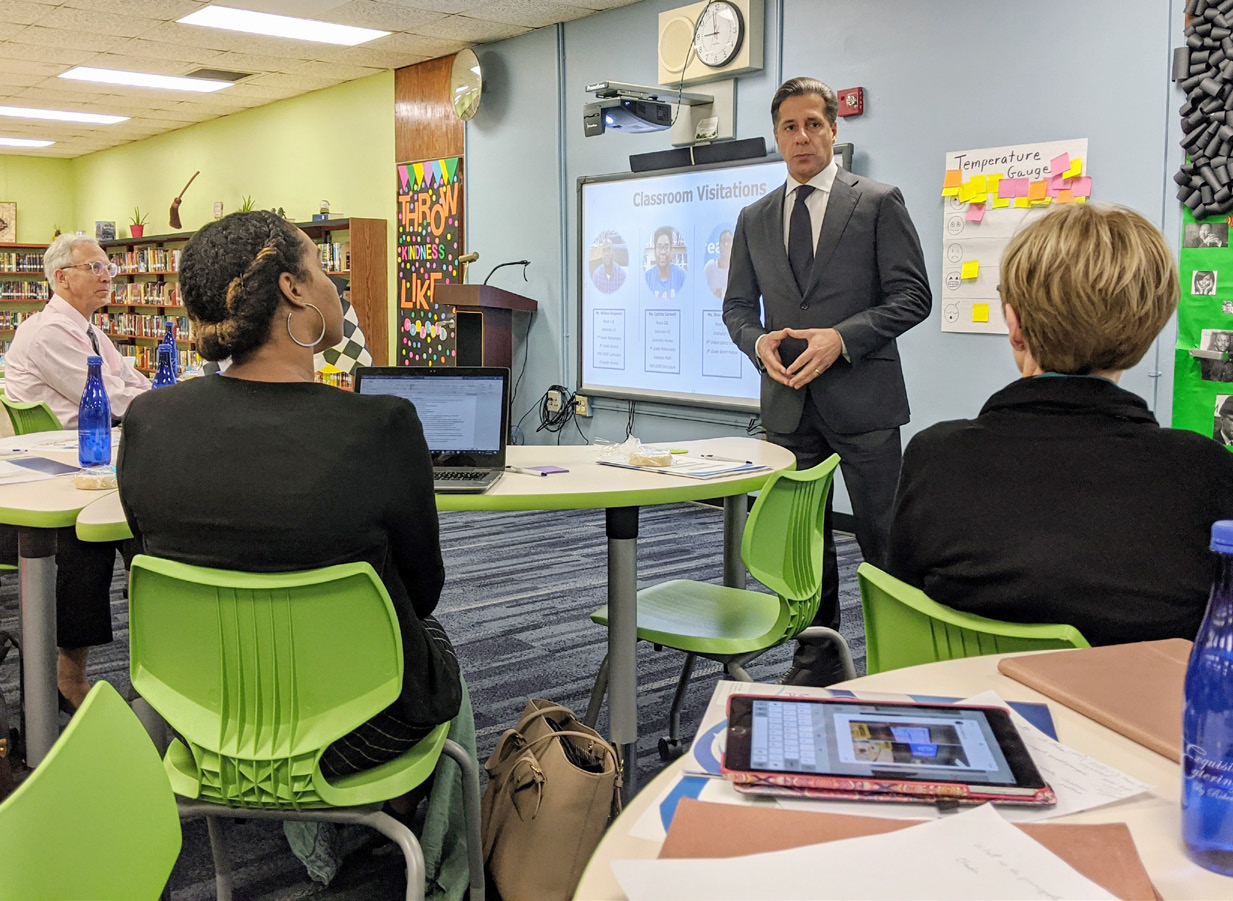
Core to all of M-DCPS’s investments in professional learning is helping educators identify how to meet the unique needs of students, particularly their most fragile students, like ESOL learners. This focus only sharpened in the district’s coronavirus response efforts, as they worked to regularly improve and hone their ICP to ensure they were helping educators maintain student access to curriculum and content, while also working to keep these student populations supported and engaged. “We are very deliberate about the design, delivery and follow- up for all our professional learning efforts, because we want these systems built for our leaders and educators to integrate and apply their learnings and their collaboration directly into classroom instruction,” said Jose Dotres, Chief Human Capital Officer for M-DCPS.
As M-DCPS enters SY 20-21, the M-DCPS leadership team has navigated their incredibly large system through numerous and evolving circumstances related to the coronavirus. But M-DCPS leadership is focused on solving problems to best meet the needs of their students; utilizing and refining their human capital systems and structures to support their leaders and educators’ needs through this challenging time.
"America, within the next two decades, will resemble more of Miami than any other city in the country. That is why unlocking solutions for perennial education problems that have vexed our nation is so critically important. If some of these solutions come from a district like Miami, even in times of significant challenge, maybe we are producing something that can be replicated or amplified not only statewide but across the country."
- Alberto Carvalho, Superintendent of Miami-Dade County Public Schools
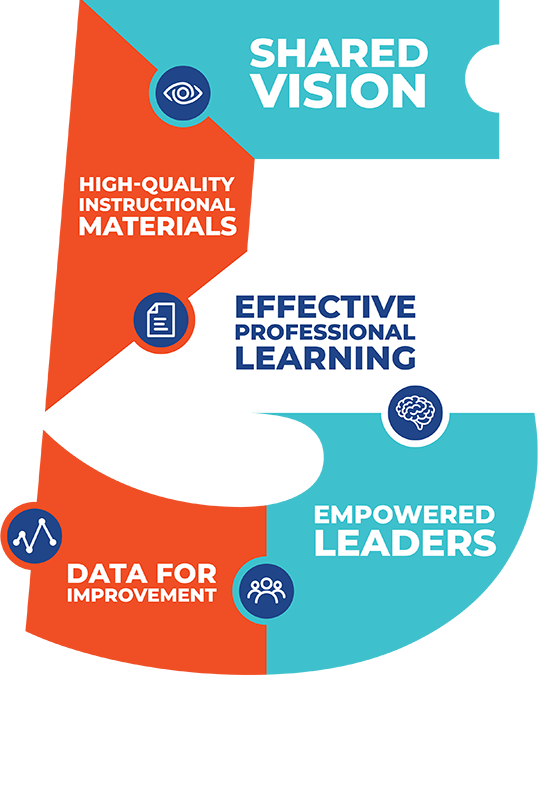
Reflection Questions
- What evidence of the Five Conditions That Support Great Teaching do you see in this case for impact?
- How does your school or district measure the effectiveness of professional learning offerings to meet teacher and student needs?
- If you were to improve the effectiveness of professional learning systems and structures in your school or district, what potential roadblocks would you be likely to encounter? How might you navigate these?
- How did you leverage the human capital of your school or district to ensure a rapid and thorough coronavirus response? What has the pandemic shown you about how well the systems and structures you have in place serve the needs of your educators and students?

